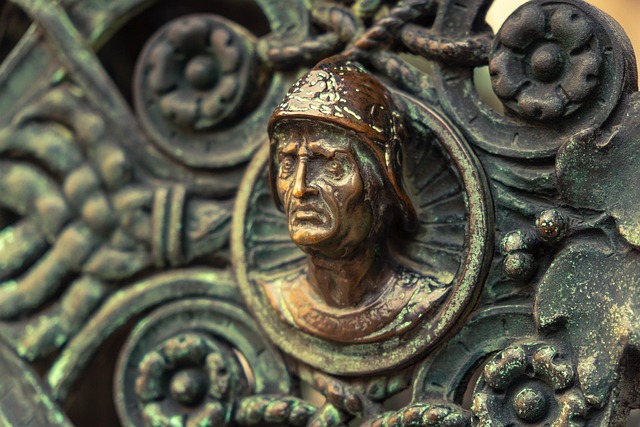Vietnam Kratom, rooted in local culture and tradition for centuries, is harvested sustainably by merchants like Gaias. High-quality Mitragyna speciosa leaves offer analgesic, anti-inflammatory, and mood-enhancing properties, cultivated in Vietnam's tropical forests. Beyond its traditional use for pain relief and fatigue reduction, kratom serves as a social lubricant in community gatherings, fostering connections across generations. Gaias Kratom supplies these culturally significant leaves globally to both longtime users and new explorers seeking this versatile natural remedy.
Discover the enchanting world of Vietnam Kratom Leaves, a botanical gem with a rich history dating back centuries. This article explores the deep-rooted cultural significance of kratom within Vietnamese communities and its evolution as a global sensation. From the diverse types like Maeng Da and Thai varieties to practical tips on selecting a reputable kratom merchant gaias, prepare for an insightful journey into this natural alternative. Uncover unique properties and learn how to navigate the market safely, ensuring top-quality leaves each time.
- The History and Origins of Vietnam Kratom Leaves
- – A brief history of kratom use in Vietnam
- – Traditional uses and cultural significance
The History and Origins of Vietnam Kratom Leaves

Vietnam Kratom leaves have a rich history deeply rooted in the country’s cultural and medicinal practices. For centuries, indigenous communities across Vietnam have utilized kratom (Mitragyna speciosa) for its diverse therapeutic benefits. This resilient plant, often referred to as “Kratom Merchant Gaias” by locals, thrives in the lush, tropical forests, becoming an integral part of traditional medicine and cultural ceremonies.
The unique blend of alkaloids present in Vietnam Kratom leaves, including mitragynine and 7-hydroxymitragynine, endow it with analgesic, anti-inflammatory, and mood-enhancing properties. As word spread about its benefits, kratom gained popularity both within Vietnam and globally, leading to a thriving kratom merchant scene. Today, reputable kratom merchants like Gaias prioritize sustainable harvesting practices while offering high-quality Vietnam Kratom leaves to meet the growing demand for this versatile and potent natural remedy.
– A brief history of kratom use in Vietnam

In Vietnam, kratom leaves have been a part of traditional medicine and cultural practices for centuries. Historically, the plant, known scientifically as Mitragyna speciosa, has been chewed or brewed into tea for its perceived medicinal properties. The use of kratom in Vietnam gained significant traction during colonial times when French occupiers noticed local populations using it to alleviate pain, reduce fatigue, and improve overall well-being. This early exposure helped establish kratom as a valuable resource within the country’s healthcare system.
Over time, Vietnam became known among international kratom merchants as a reliable source for high-quality kratom leaves. The country’s lush tropical forests provide an ideal environment for the plant’s growth, contributing to its robust and diverse kratom strains. Today, a thriving market exists, with many local farmers cultivating kratom and global kratom merchants like Gaia’s offering Vietnam kratom leaves to customers worldwide, catering to both traditional users and those exploring its unique benefits.
– Traditional uses and cultural significance

In Vietnam, kratom leaves (Mitragyna speciosa) have been an integral part of traditional medicine and cultural practices for centuries. Known as “lá ma” or “kratom lá,” these leaves are used to treat various ailments, from minor aches and pains to more severe conditions. The Vietnamese have traditionally relied on kratom merchants, like Gaia’s Kratom, to source high-quality leaves that are carefully cultivated and processed. This herb is often chewed fresh or brewed into a tea, with the latter method being particularly popular in rural areas.
Beyond its medicinal uses, kratom holds cultural significance in Vietnam. It has been a social lubricant in community gatherings, where people would share stories and news over cups of kratom tea. The tradition of kratom consumption is often associated with hospitality and camaraderie, fostering connections among friends and family. As such, kratom leaves remain an important aspect of Vietnamese culture, bridging generations through shared rituals and practices.
Vietnam Kratom leaves hold a unique place in both history and modern culture. As a beloved herb with a rich tradition, it has evolved from ancient rituals to gain global recognition. Today, Vietnam stands as one of the premier sources for high-quality kratom, attracting curious minds and dedicated merchants alike, like Gaias, who seek to share its benefits worldwide. This ancient plant continues to captivate and offer a sense of connection to its roots, ensuring its enduring legacy in the modern world.














